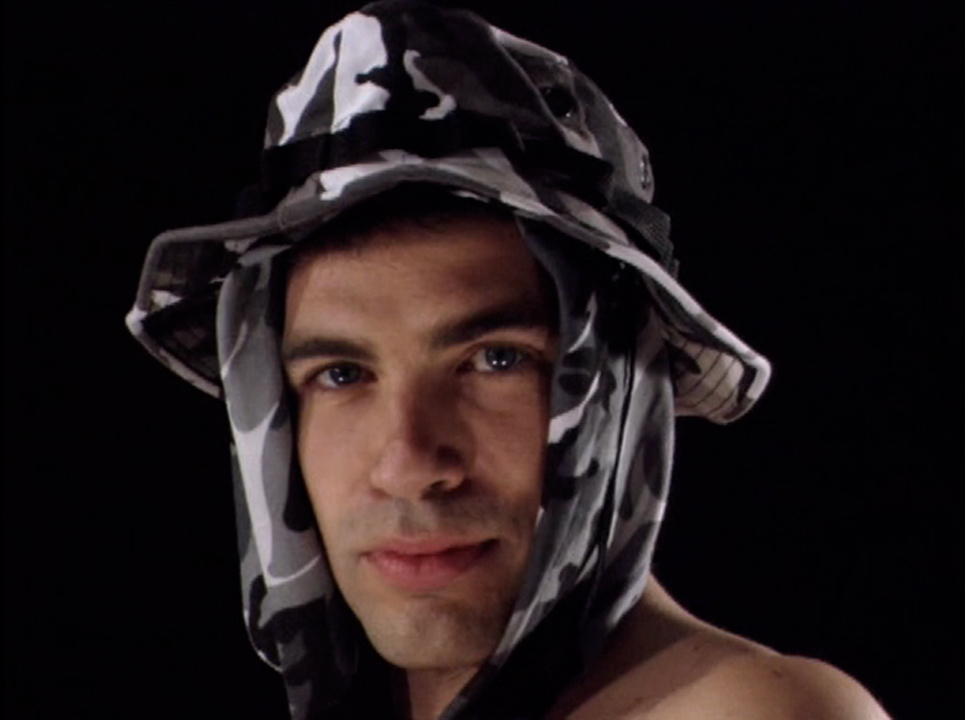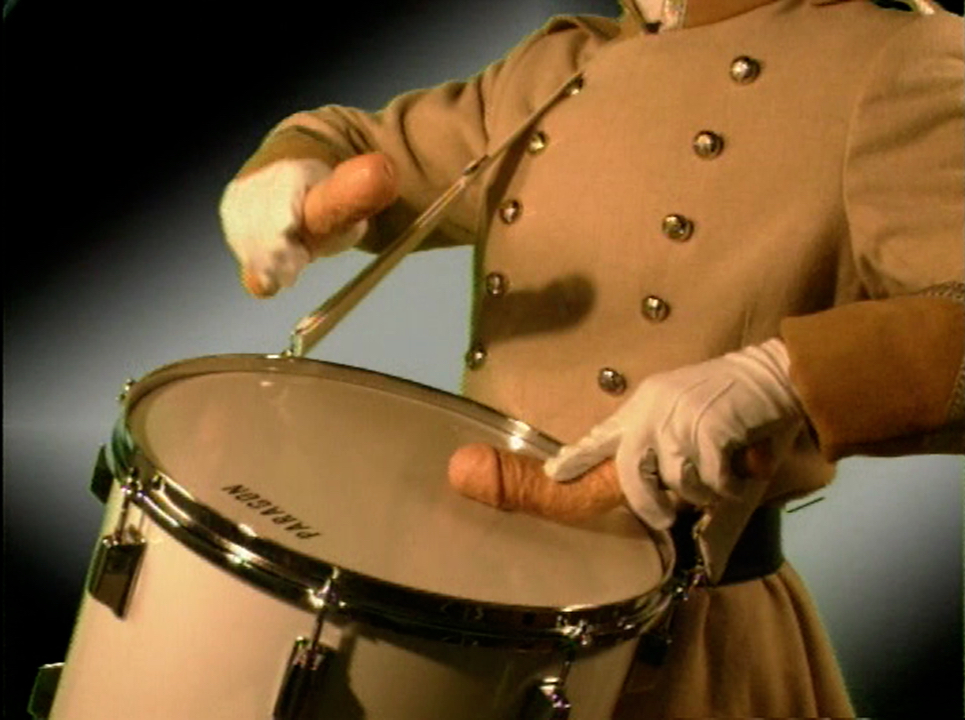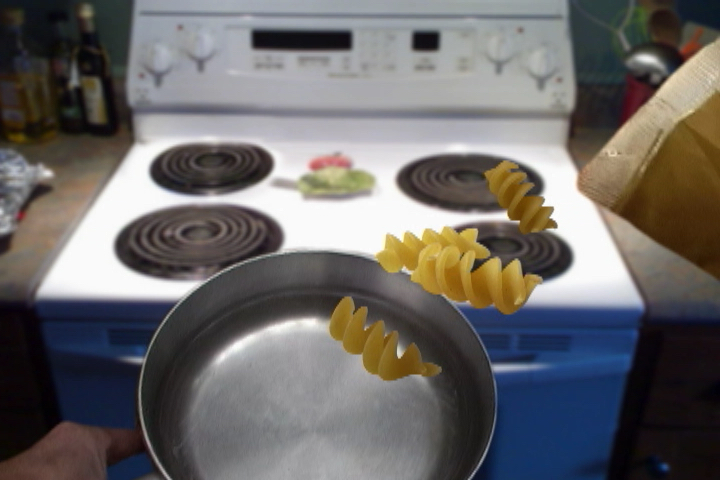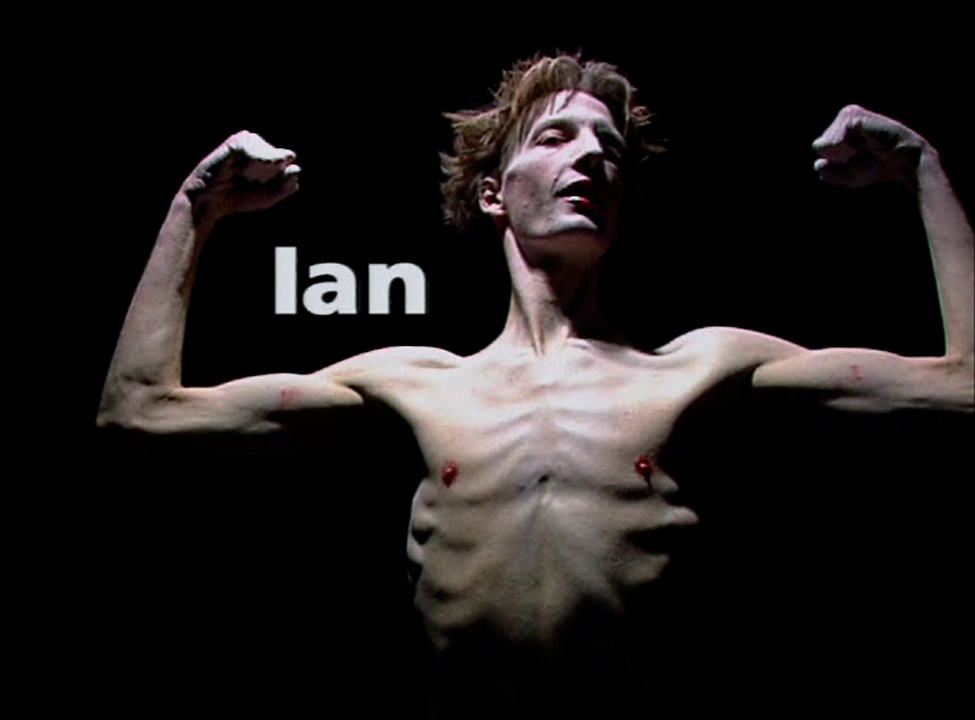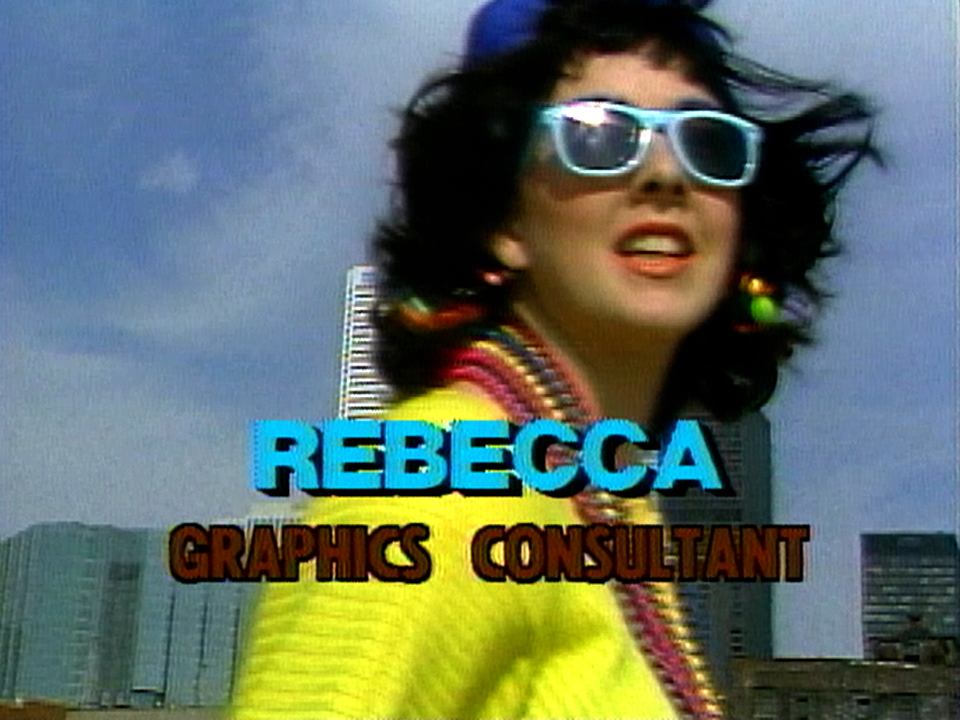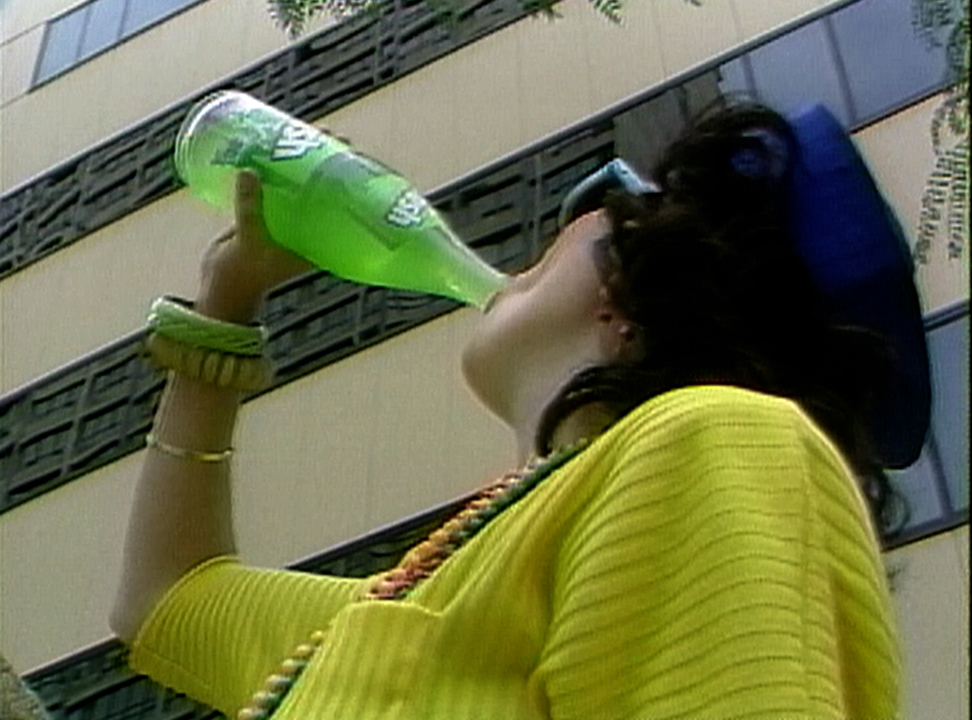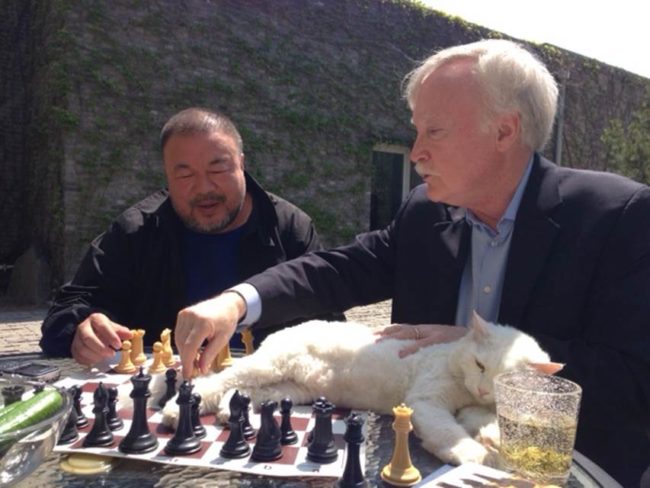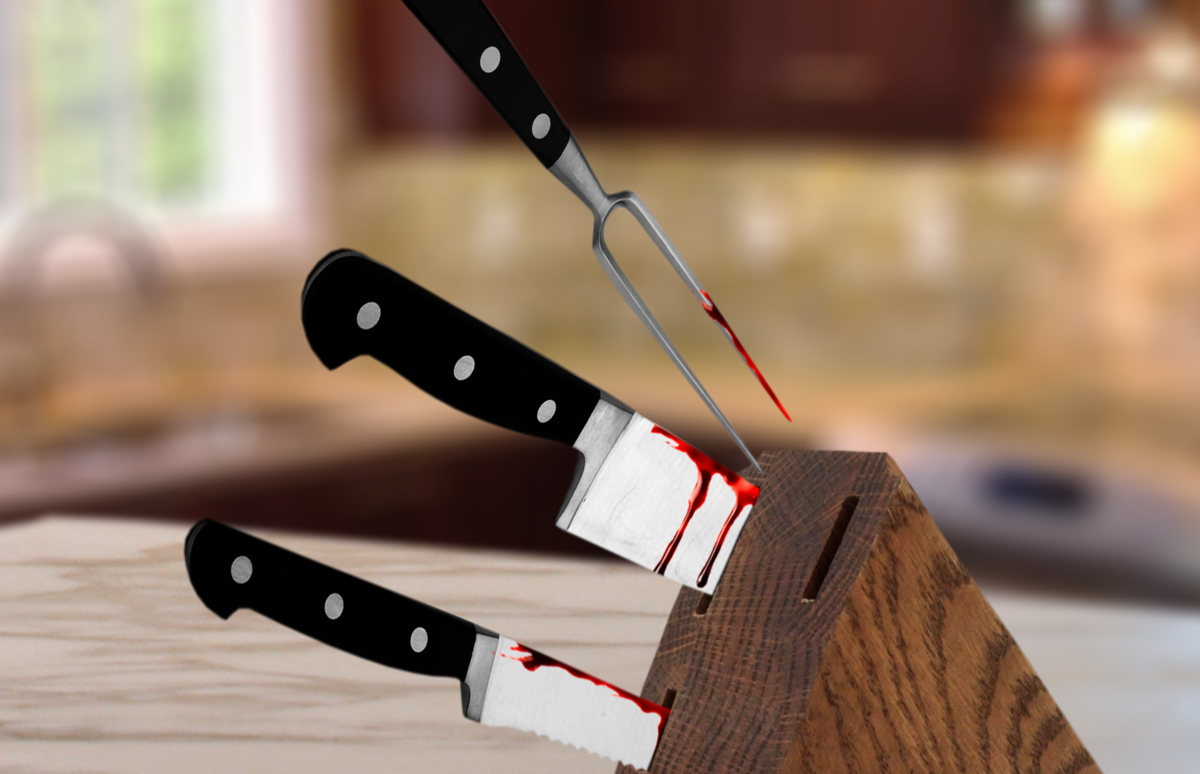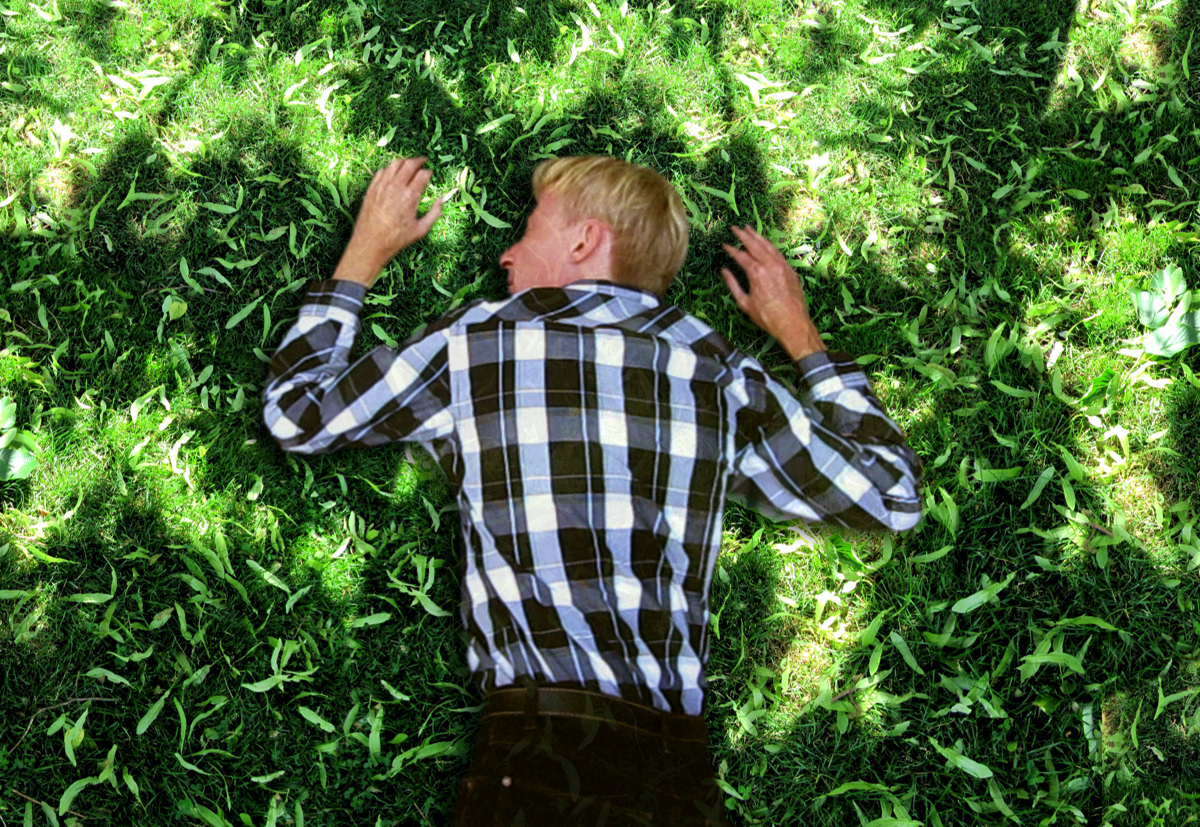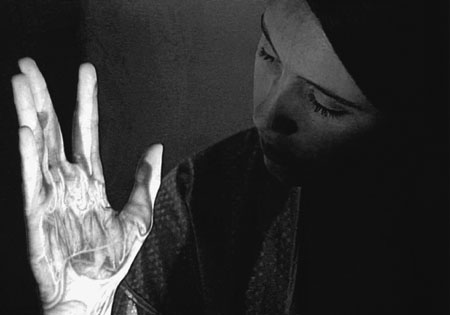Getting It: an interview with Dennis Day (2013)
Mike: You’ve been at work in the video fields for so long, watching its many forms and incarnations. It’s hard to imagine that video was once rare, with expensive, difficult-to-use machines requiring experts like yourself to make them available to artists. It’s the old dream of an accessible technology come true, a socialist utopia realized. Or is just another way of saying I love capital? I wonder if you might reflect on video’s newfound ability to be everywhere. Isn’t everyone a video artist these days? Pointing telephones in the direction of decisive and indecisive moments. Shorts are the usual diet, handheld it goes without saying, and there are no rules for those who never imagined them in the first place. Is this paradise or something else?
Dennis: Video’s sudden ubiquitousness certainly irritated me at first. People constantly taking pictures and making movies of each other and their “loved ones;” a big teddy bear and panda orgy. Everybody staring down at a small screen, with a slight smile on their faces. But after reluctantly getting used to it — and after some reflection — I would have to say it shouldn’t surprise me. It’s likely just a continuation of a trajectory that started with the light bulb or whatever; technology as a conduit for hope. (As we get older it seems to morph from hope to control.) And the trajectory certainly hasn’t reached any kind of destination. The world certainly doesn’t feel any better than it did fifteen years ago. A technological utopia? I don’t think so. Once you start to feel happy, you have to buy more RAM. People have never been more connected and yet more suspicious of each other. And the last time I checked, my body was still analog.
The fact that this technology is now cheap or accessible doesn’t really change too many equations either. Most people are still just trying to climb up out of the muck — god bless them — and get laid or whatever. Movies and pictures affirm something. We were here. We did silly things. We laughed. The fact that some people are taking these “self-affirmations” up a notch and posting them on the internet does seem to be accelerating a social dialogue, which on the surface seems to have a net positive effect (anti-bullying, gay acceptance, etc.). But that’s just the world catching up to what artists and activists have been talking about for years – a kind of consciousness gentrification if you will. And the fact that everyone is now texting, doesn’t mean that everyone is now writing a book.
I’m old enough I guess that I managed to avoid co-optization by the whole “relationship” industry. And I’m one of those old farts who just sees a camera as a tool. I’m also not overly fond of people, so taking lots of pictures of them, and posting them online, is very unlikely. But, as an artist, I intend to keep using video and photography as mediums of expression, as they are comfortable and familiar, and I like to think I am developing a visual and syntactical language. If I see something creative or imaginative on the internet (usually formal stuff) I still get quite excited. I guess I think I’m still part of some equation. But if I ever get tired of this language it’s gone. No hard feelings. (I’ll breakup via a text message.)
Finally, I’ve never really felt, as an artist and Newfie in Toronto, that I fit in. And now, the people that I don’t fit in with are all carrying cameras. For me, nothing essential has changed.
Mike: It makes me wonder what fitting in means. Perhaps fitting too well would make the project of art impossible, at the very least, it suggests some necessary distance that might be productive. What brought you here those long years ago?
Dennis: Not fitting in is a lot of work. My “outsider-ness,” I believe, has two distinct facets, which I like to polish every now and then. Firstly, no one can possibly overestimate the long-term side effects of growing up in Newfoundland. It’s actually not something I nurture, yet for the longest time (just starting to fade in the last five years or so) I would regularly have a thought that goes something like: “That’s not how we do it in Newfoundland.” This was a recurring and private conversation for many, many years.
So how do they do it in Newfoundland? Well, the simplest answer is in fact a question. “Why do something in ten steps when you can just do it in two?” Urban citizens typically seem to apply this mannerist and totally unnecessary layer to everything. Not just in action, but also in words. I would even go as far as to say that “delaying the inevitable or obvious outcome of something” constitutes about thirty percent of the world’s workforce.
So by deduction, it would seem that being a Newfie has something to do with being practical or pragmatic, or from another perspective, lazy. It would also seem to have something to do with having a certain disdain for everything — wanting to get everything over with as quickly as possible. (And get back to what I’m not sure.) So, I’m never where I am. I’m always thinking about getting out of “here” and going to “there.”
Secondly, and this may or may not be related to geography, I’ve always felt that people talk too much and spend way too much time with each other. Growing up with nine brothers and sisters I guess there were two possible outcomes. I got the anti-social one. I truthfully didn’t know that people were supposed to like each other. I had to learn that. I also didn’t know that it was perfectly okay for someone to talk about nothing for hours on end. I’m finally developing the skills to interrupt rambling conversations.
Both of the above not only influence my artmaking, but I believe, are the reason I make art at all. My work is very much about human behavior: its absurdity, its layers, its codification, its ritualization and — in most cases — its comedy. If the world made sense, I would spend more time living in it.
Mike: You are so wholly identified with video in my mind it’s difficult to imagine a moment when the two of you were not whispering together. But could you take me back to that instant when it first turned your head? What kind of freedoms did it seem to offer, and what necessary restraints? (Or were these still part of a secret life that had to be kept underground?) How did you get involved and become part of that small screen dream?
Dennis: The shortest route to that answer would be to say that, as a teenager, I felt trapped — in a small town, on an island, under the snow. Whether my sexual orientation made me squirm (or some other part of my DNA) I can’t say. But I wanted out. I knew there was a big shiny world out there, and I wanted to get to it as quickly as possible. I developed an overwhelming disdain for anything that might be considered old-fashioned. If something was older than a few hours I wanted to smash it to pieces. History and tradition felt like such a burden.
By the time I arrived in Toronto in 1980 my character was largely set. Now I just needed to find the right mold. That happened one evening while strolling down College Street with a friend, and we walked by the Ontario College of Art and Design’s Stewart Building, at the corner of College and University. I looked up and it said “Experimental Art, Photo-Electric Art, Holography”. What on earth? Within a couple of weeks I was enrolled.
The minute I was handed a video portapak (a portable video camera which actually weighed about two hundred pounds) I was hooked. My brother was staying with me at that time, and one evening we took the furniture in our loft apartment and nailed it to the ceiling. And then of course we videotaped it. While I never completed that particular video, the process set me on a dizzying course of re-inventing practically everything. I had no art history behind me, and copious amounts of naiveté. I became “a technique in search of an idea.” Trying this, trying that. Falling asleep at six in the morning. But the art college gave me some of the direction I needed. At the time it was very much about identity politics, corporatization and American imperialism. I jumped on board, wrapping my vision of the world around many of these issues.
I quickly learned however, that while most people seemed to like new ideas, they didn’t all necessarily like new form. Video was not everyone’s cup of tea. It was shiny and plastic and cold, teetering on the precipice of the commercial. Something called experimental film was also brewing across town, and it was screaming “no dissolves, no wipes, no fancy titles!” What was I to do? I had just traveled one thousand miles to get away from “Sunset Boulevard,” and now I had to pick up a 16mm camera! No thanks. Sticking my head in the sand, I kept doing what I seemed destined to do, and have been for thirty years now. And it is precisely because video is so difficult that I keep doing it. It’s like working with one hand behind your back. Every image is disquieting, every image hurts. There is no “natural embrace.” For me, that is called suffocation.
Mike: Your words remind me of performance superstar Marina Abramovic’s description of her practice. She writes, “…when I’m afraid of doing something, this is exactly what I should be aiming for. Only in these moments can you break the patterns of your life, your habits, and experience something else.” The wound is the path. Does the medium of video, or the way you’ve taken up particular technical challenges, provide you with some necessary resistance, some important difficulty or “unnatural embrace” that provides the ground for exploration and discovery?
Dennis: Several years ago I was watching a documentary on a Baroque painter and the narrator said something like, “With each paint stroke, it was as though he erased the stroke before.” I sat up in my chair, metaphorically speaking. I know documentaries on art can be quite heady but that was mind blowing! What a perfect description of not just art making, but living itself. The addition and the subtraction, the conviction and the doubt, the light and the dark. The absolute polarity of life, which we constantly pretend is not there. Making art feels like that to me: completely honest and completely false. I work when it’s honest, I despair when it’s fake. I work as long as I can lie to myself, and I stop when it’s time for the truth. (You get the idea.) It’s an addiction, in every sense of the word.
Many artists often start from things that they “hate”. I am typically one of those artists. I have to examine why I dislike something and rescue it from perpetually occupying that position in my mind. These things are always man-made (objects, codes, rituals, tropes). I couldn’t possibly speak on behalf of a flower, or recreate something that I thought was already in repose.
The medium of video presents the same challenge; it’s electronic, it’s aloof, it needs batteries to be warm. I embrace it in a desperate attempt to convince it that I am here and to assert my mortal authority.
Several years ago I made a video (Life #2, 2007) in which I represented myself as a kind of zombie, buying a coffee at Starbucks and texting on my cellphone. I wanted to visualize the fact that I felt like a zombie participating in some urban experiment. Perhaps if I were a more mature artist, I could represent myself prancing through flowers and tossing away my phone. I would enact the solution, not the problem. Who wants more zombies?
But is there a single artist in the world who wouldn’t say that their intention is “not to provide answers, but simply to ask questions?” Perhaps the delight is in the journey. (And besides, self-assuredness generally sucks.)
Mike: I think I hear you saying that you move towards what is difficult via a necessary lie in order to engage in the addiction of artmaking. Art is a means of rescue, aimed at restoring a lost moral authority, even if only temporarily. This raises the question of the audience and who the work is made for, or aimed towards. Are you troubled that much of your work shows in front of those already hip to the codes, more insider talk within the cult? Have their been movies of yours which have reached outside these confines, and did that raise other kinds of hopes (hey, maybe I could do this for a living?)? The audience for short experimentalist media art has changed so much over the past decades, am wondering if you might sketch out a quick timeline in relation to your own work, the kinds of places that were once possible, and what remains now, where we are faced with the everywhere and nowhere place of online and anonymous streaming.
Dennis: This audience concept is something I’ve been thinking about a fair bit lately, not because I’m increasingly interested in audiences, but because I’m starting to reconsider the whole construct. Ever since I can remember, television (and to a lesser extent radio and printed media) has had this uncanny ability to suggest that there is one world. A singular and omnipotent notion that there is one giant lens looking down at the world; and as Andy Warhol suggested, our goal is to somehow get in front of it for fifteen minutes.
It is more likely that there are 7.1 billion worlds – and I guess 7.1 billion potential cameras. But still this notion that everything can be distilled, explained and described from some sort of singular and divine perspective largely remains. The news of course is the perfect example. The news according to who?
Even if we were to be a bit more optimistic and say that there were actually quite a number of smaller worlds, the notion lingers that they’re somehow all patched into some theoretical main feed. There’s no clearer evidence of this than someone in 2013 referring to the “art world;” an impossible, selfish and completely ludicrous construction.
What am I getting at? The glue holding this one world together is not only drying, it’s starting to crack. The internet is perhaps the final drying agent.
When I first started making videos (mid 80s), I don’t recall thinking too much about audiences. I guess I assumed that along with this burgeoning new art form, there would be burgeoning new viewers. Festivals were springing up all around Toronto (The New Work Show, Images Festival, Pleasure Dome, Inside Out Festival, etc.) and there was a palpable excitement in the air. At the root of all this was accessibility. Equipment was becoming more portable and readily available, with the Ontario College of Art providing video porta-packs to its students. Single-channel screenings were popping up in galleries, and YYZ Gallery even went so far as to make video and new media an integral and ongoing part of its programming. Running in tandem with all of this activity was something called “cable television,” with homemade, quirky shows popping up on local stations (e.g. Maclean Hunter — now Rogers), primarily to meet those station’s community programming quotas. They too gave easy access to video recording equipment and studios.
I participated in many of the above venues with, I guess, blind enthusiasm, and not too much consideration for what my future might hold. For the first seven years after leaving art college, I settled into small, closed-circuit screenings in local, national and international festivals and occasionally in galleries. There were definitely a few nice bumps at the start with screenings on television stations like PBS (US) and Canal Plus (France), and offers of representation from a number of distributors.
I realize now that I was quite happy showing my work to the converted. In retrospect I think I was actually striving to entertain the converted. I actually made a number of videos that made fun of being gay (Auto Biography, An Illustrated History of Western Music). Folks, we know we’re all equal here. Let’s have some fun!
But like most people with a somewhat inflated ego, after a decade or so of kicking what felt like a small can, I started to want more. I felt that I wasn’t really gaining any momentum. Festivals were also starting to lose a little bit of their luster (at least for me), and issues around censorship had sadly only served to push many of these specialized venues further into their own corner… and definitely off of television. Monetarily, things weren’t getting any easier either. The returns on a single-channel screening were, let’s just say, modest. And occasional, one-month artist fees in galleries were few and far between. It started to feel like you made one tape, showed it to a few people, and the next day you got up and started to make another one.
So, I did what I had done several times before. I headed to Montréal (just after Mike Harris came into power in Ontario.) If I wasn’t going to be successful, at least I was going to feel successful. In Montréal I felt heartily embraced by organizations such as Cinéma Parallel, Nouveau Cinéma, Oboro, Vidéographe and Image et Nation. It wasn’t a perfect fit, but it was okay; a welcome relief from the knock-‘em-down sensibility of Toronto. The French tended to favour the poetic, and strong image aesthetics, and they also gave you the impression that they respected you as an artist. I felt like an honorary francophone and I learned how much I loved being an outsider. (It was like waking up every morning in Paris!)
From Montréal, I also pursued the “brown paper envelope” route, putting my latest video in an envelope and sending it off to some exotic locale. Practically everything I sent to Europe or the US was accepted into a festival, often programmed into opening night slots. This, and the odd prize, kept me going — at least creatively.
Earning a decent living, however, eventually brought me back from Montréal with my tail between my legs. And to this day I could list this as a regret. From 2000 to 2007 I was in limbo. I wasn’t sure what I was doing, but still pursuing my craft.
Round about 2007 I felt like I suddenly woke up. I decided to embrace the new virtual, digital, webbed-world around me and get on with it. The Toronto–Montréal dichotomy seemed like old news. Suddenly it felt as though it didn’t matter where you lived, and the whole artist-location link was a dead fish. (Remember when we used to talk about Queen Street artists?) Have internet will travel.
Now it clearly feels that the world has re-arranged itself (into what I’m not sure) and quite surprisingly I feel once again ready to play. I kind of love all this uncertainty (we’re all in this together), but perhaps more importantly, I think I just weaned myself off a self-indulgent notion that the world owed me something. I’m beginning to not just realize, but believe, that you have to create the world that you want to live in. Nowadays, I’ll take whatever I can get. The privilege of making art in a world with so much disparity and circumstantial opportunity gives my step all the spring it will likely ever need.
Mike: At the risk of opening old wounds, I’m wondering if you could spare a few more words about Toronto’s “knock-em-down” sensibility. Is it a form of aesthetic Darwinianism where only the strong survive? Or perhaps you’re referring to some democratic impulse run amok, where any artist who receives too many just desserts is relegated to the forgotten backwaters of the image world so that the bright new somethings can be granted a place.
Dennis: It’s a little tricky to talk about the construct “Toronto” because a lot of the time I’m not sure it actually exists. Certainly there’s a population and a bunch of buildings, but on any given day your experience of Toronto can be quite different. But if there’s any predominant experience, it’s probably cold and aloof. Are the people inside those aloof bodies any different than the people in Montréal or New York? Probably not. So what is it that foregrounds this aloofness?
A friend of mine pointed out to me years ago that the street signs in Montréal tell you what you can do, and the street signs in Toronto tell you what you can’t. In Montréal I occasionally see things that make me smile, whereas in Toronto I occasionally see things that make me angry. And then of course we can talk about liquor laws. It seems that Toronto focuses on denial, whereas other cities focus on something like common sense.
I’ll never forget the first time I was in Amsterdam — early 90’s I guess. I went swimming at a local pool and when I walked out onto the deck I saw kids running all over the place, and noticed that one of the lifeguards was smoking a cigarette. I thought this place is crazy. I realized that in many places in the world the philosophy is “If you want to kill yourself, go ahead,” whereas in Toronto/Canada and increasingly in the US, the philosophy is “We’re going to prevent you from killing yourself” – at least hypocritically. There’s a dark force in the world that needs to be resisted at all times. (This sounds a lot like religion.)
In the art world there’s an expression “You’re only as good as your last…” This is definitely the defining Toronto sensibility. And any “goodness” that might be bestowed upon you only lasts about two months, and then you’re back to zero. This is both frustrating and quite liberating. It’s liberating because it doesn’t seem to foreground concepts such as genius or talent.
Everything, even art, is simply a product of hard work, a little bit of inspiration and perhaps a dollop of genius. The DNA that we share is stronger than the DNA that we don’t.
(This sounds very secular.)
The other predominant art world condition is what I call “anointment.” That is, artists need to be anointed by someone — preferably by someone from Europe. This ritual elevates them from the boring mud of their particular DNA and pushes them back into the divine realm, where they can essentially do no wrong. Until you’re anointed, it’s a never-ending grind.
(This sounds very religious.)
Mike: I have hazy memories of you showing off sparkling new video moments in the company of Su Rynard under a catchy title (Three Blondes?) a few decades ago. It wasn’t simply that you were presenting new work, but these evenings promised a video frontier that cherished its pictures as never before. It was short and savvy, filled with dazzling effects, living proof that poetry could be entertaining. Here at last was a new generation of makers who would sweep away the long-winded efforts of video’s mothers and fathers. Weren’t you part of the new direction, the hope we didn’t even know we were waiting for?
Dennis: Now there’s a memory. I don’t remember all the details, but certainly the salient points. I had this brazen idea, just out of art school, to open up a booze can in a huge studio that I had secured at a ridiculously low rent. It was at the corner of Bathurst and Wellington (60 Bathurst). I have no idea where this impulse came from; I didn’t even like parties. But I think I liked managing people or something, having come from a large family. It was a weekly event, very occasionally featuring live bands and performers, and a cast of art world eccentrics manning the door and the bar. It had an Andy Warhol sensibility I guess. I ran it with my crazy roommate Mark Tyrell (who sadly, has since died.)
Around this time I had become friends with Su Rynard and Christine Martin. We jumped on the 80s bandwagon and incorporated under the name “698515 Inc.” That was our corporate number. The three of us did some short pieces together. Su and I then hooked up with Tess Payne and Rhonda Abrams, recognizing some kind of shared sensibility. Tess was doing quirky, “gentle” narratives, while Rhonda was staging mini-operas in mundane, everyday locations. I can’t say what our shared sensibility was, other than none of us seemed to hate the image, and none of us had completely abandoned narrative. At that time there was a strong, low-tech aesthetic defining a lot of Toronto video art — a sort of Vito Acconci sensibility. No lights, no tripod, no fancy effects. Under this mantra, it didn’t matter what it looked like as long as it didn’t look like television. I think for the four of us, that was simply too restrictive.
And so, in July of 1987, in this “Factory” context, we held a group exhibition of new works. We organized under the collective banner “The Four Redheads” (even though we didn’t all really have red hair.) While there was no articulated curatorial premise, the works were evidently exploring issues around technology, nature and urbanization; the natural versus the artificial I guess you could say.
Well, what happened was memorable to say the least. A video screening in a 2500 square foot loft was packed to the rafters. Sweat was literally dripping down faces and people were straining at the far corners to see the screen. We had rented a video projector and raised it up, which made that task a little easier. The reaction from the crowd was delightful; swoons and laughter throughout. A roaring, downtown appreciation of what four “young” artists had to offer. There was something in it for everyone, not to mention lots of beer.
But of course the sun eventually had to go down, and then come up on the harsh light of the art world. All things, it seems, must ultimately be put into some kind of critical context and I didn’t fare so well. In a review of the show, my video, which was called Oh Nothing (1987), was accused of being “empty.” Some of us fared better with the literary gatekeepers. I went from ecstatic to despondent, I wondered where I might hide. Soon after, I received a letter informing me that the same video Oh Nothing had won the Young Director’s Award at a prestigious video art festival in Geneva. They invited me over to collect the 4000 Swiss Francs prize. I think that was all the art world education I would ever need.
In 1994, the four of us banded together in a reunion of sorts under the title “Super Natural,” for a single, collective screening at the AGO. I don’t even remember the screening. It all felt rather perfunctory, air-conditioned and official. By that time of course, the youthful magic of that evening in 1987 had largely faded, and we were now busy plotting our way through the official art world. That was our last collective screening.
Mike: Wait, did you fall into despair because of a single word in a review? It makes me wonder how words can be so powerful while pictures are so light. I’m wondering if you could say a little more about the conversion of pictures into words. The common shtick nowadays is to claim that one’s work is “in conversation” with… dead fathers and mothers, theory fields, dispossessed populations. But it strikes me that the form of what is named “an artist’s talk” is a one-way transmission, a monologue. This is what I did, this is who I am. Or to paraphrase Marguerite Duras: I didn’t have the strength to stop making this. You are such an articulate person, I’m wondering how the way you describe your work, or the way that others describe it (whether officially in print, or off the record in parties and after screening scrums) changes what you do. Do you talk about your work while you make it? Because you’ve worked as an editor with some of the most luminous artists in the country, you have been engaged in deep chit chats during the making of hundreds of movies. Or is that just about keeping the customer satisfied? Are there conversations you’ve had that change the way you think about a movie, or even about the entire project of being an artist?
Dennis: On at least ninety percent of the artist projects I have worked on as an editor, there was one constant and essential question; “Will the imagined audience get it?” And getting it had to do with the flow of information, images and sounds over time. While films and videos might now be edited non-linearly, they are certainly not viewed non-linearly. All time-based media functions on some narrative – or “expositional” – level. We understand things as we go. (I still scratch my head at the idea of interactive art, and the notion that we can somehow “interrupt” our experience of the world, and not have to live in it one moment at a time.) So the basic concern with most films and videos is not whether the audience will like the work, but whether they will understand it.
For me personally, there’s another level, other than getting it. The notion that artists shouldn’t be influenced by what other people say doesn’t really make sense. If six people tell you that a train is coming, it’s probably best to get off the tracks. If you make art and display it publicly, it’s probably wise to at least listen to what people say about your work.
This perspective probably has to do with the kind of work I make. I see much of my video work as a conversation with the world. And consequently, there wouldn’t be much point in having a one-way conversation. As the Chinese artist Ai Weiwei said recently, “Art making is like chess. The world makes a move, and then I make one.”
I do believe however, that there is a category of artists that quite comfortably ignore what you might call feedback. Very generally, these are artists who have a natural ability or proclivity — typically since childhood — to do or make something. To sing, dance, draw or paint a certain way, or create a very unique almost hermetic type of work. (I think the word I’m looking for here is prodigy.) If what these people do connects with the world on some level (and is not perceived as naive) they can probably go to their graves making or doing pretty much the same thing. It’s so unique and wholly individual that it’s better left alone.
For those of us who like to think that we work in the realm of ideas, what people say about our work does have some impact. For me, however, it’s what people do not say that affects me more than what they do. In retrospect I would have to conclude that everything that’s been said about my work is on some level true. Why would a reviewer lie? My issue however is often on what side of the “culpability equation” these writers place me. What might be a negative attribute for them, could be an intended attribute for me. It’s when people completely miss the real essence of my work that I go into shrug mode and tell myself that I don’t care. Maybe they’ll “get it” when I’m dead.
While I do often run their lines over and over in my head, I can say with certainty that I do not actively consider them once I sit down to create a new work. Perhaps they’ve been absorbed? Only issues around representation (race, gender, ethnicity, etc.) are overtly carried from one work to another. Any formal or pictorial considerations are conveniently forgotten.
As far as talking to myself is concerned, and how outside conversations filter into mine, I seem to move through the world in two basic states: completely optimistic or dragged down by self-doubt. The former is my natural state and constitutes most of my day. Walking down the street, having a coffee and sketching, or writing excitedly in my notebook. The world is an endless source of inspiration and ideas. Doubt occasionally creeps into this germination process but it is typically very fleeting. As I’m packing my groceries at the checkout I might think, “That last idea is kind of dumb.” That’s it.
The second state of self-doubt typically kicks in during the production or completion process, when I see the idea forming in front of me. As it comes together, I may develop a creeping sensation. “Oh no, that’s not working. What a stupid idea.” In this scenario, the idea typically appears obvious, dumb or tired. This is very deflating and disappointing. I often have to go and lie down.
But what is this self-filtration based on? If I knew that in advance, I wouldn’t have begun making the work in the first place. I can say that it does have something to do with a) The work revealing too much. b) The work not being greater than the sum of its parts. I thought I added yeast, but it didn’t rise. c) The idea has been done whereas I thought I was putting on a fresh spin.
If I did an inventory, I would have to say that up until about two years ago, I threw out sixty to seventy percent of what I started. This ratio was both a source of embarrassment and anxiety for me. I kept it hidden. In the last few years however, things are starting to improve. Whether my ideas are changing or I have greater strength to push through, I’m not sure. But now it’s, “Damn if I throw something out!”
And finally, there is a third state, which typically happens just before a deadline, where I find myself in a complete panic-stricken state of confusion, and where I cannot tell which way is up. This is extreme tiredness layered on top of self-doubt, which is layered on top of over-exposure to my own work. There is only one solution here; to tear myself away from the work and go clear my head. A difficult process when you have a looming deadline.
I have this expression when I’m making a work of art (either for myself or others), where I decide that the work has “passed the point of embarrassment.” It’s a somewhat trivial, yet comforting analysis. Whatever the work is or isn’t, it likely won’t embarrass me if it’s exhibited. It might be greeted with indifference, but I can handle that.
And finally, I do feel that I can now reasonably predict the exhibition arc of much of the new work that I make. If it’s a certain type of video, I know it will likely go here or there. If it’s a certain type of photograph, it could easily be sold. If it’s another type, it will likely end up in storage. This is comforting, as it finally gives my artmaking a few scientific overtones. How people might perceive what I do shouldn’t always remain a mystery. Certainly not for my entire life!
Mike: In John Greyson’s beautiful and touching elegy for departed lover and video dad Colin Campbell, he said that Queen Street had embraced his low-fi, gender-bending videos, even if Church Street hadn’t. I wonder if you feel a similar division in the reception of your movies between the art mavens and gaytown? Many of your works aren’t explicitly gay, no surprise perhaps that after all these years you’ve taken on a great range of subjects. But do you feel that all of it can be named as queer, even though the overt subject matter might be far from explicit?
Dennis: It wasn’t long after I started making video art that I realized that Church Street wasn’t necessarily going to be a de facto audience for my work. After moving to Toronto, Church Street very quickly became what I did after ten pm, while art making was what I did before. And it’s through this question that I can finally articulate my surprise and disappointment in this revelation. To this day, I am confused by the discovery that not all gays and lesbians are interested in art, and that not all gays and lesbians share what we might tenuously call left-wing values. To me, this is simply an unbalanced equation.
But I’ve given up on this type of math, and realize that this was a naïve assumption. As I’ve said previously, I see my work as a conversation with some kind of imaginary audience. An audience I believe to be intelligent, thoughtful, curious, ironic and having a sense of humour. I gave up on art movements a long time ago, and to this day avoid art magazines and art criticism. While anyone can likely spot my style, I see each piece as different and autonomous; and more importantly rooted in a specific time and even place.
Contradictory to a part of your question, many of my earlier works were very “gay specific” (Auto Biography, Got Away in the Dying Moments, Heads or Tails, Heaven or Montréal). I only switched gears in the late nineties, as I felt I had nothing further to say on this subject. My goal was only ever to say that gays are the same – perhaps just as frivolous and silly as everyone else.
Recently, I feel I’ve turned to more philosophical concerns; addressing more general issues of perception, technology, shared cultural signs and language, and even (most recently) our obsession with forensics and evidence as proof that something actually happened (It Never Really Happened, 2013). I guess I’m just a privileged person who gets to walk around and reflect and ruminate on things that most people don’t have the time or inclination to even imagine. But I believe I’ve earned this privilege and I respect it immensely.
Mike: You worked for years at Charles Street Video, the upscale video production joint for artists. While Charles Street and other video access centres across the country continue to offer gear and post-production happiness, most everyone with a portable phone has a camera, and can edit footage on their small supercomputers at home. I’m wondering if you could tell me a tale or two from back in the day, while working with artists to realize their impossible dreams. And if you might muse on the future of artist-run centres in relation to media art, is the whole project kaput?
Dennis: I guess the earliest recollections I have of Charles Street Video are mostly at two or three in the morning; running into Susan Mackay, Geoffrey Shea, Su Rynard and many others, down in the tiny basement — when Charles Street Video was actually on Charles Street. This was the mid-eighties I guess. I felt like we were all resistance fighters, using little LED lights and switches to change the world. Many of us worked late at night because the rates were much cheaper after hours.
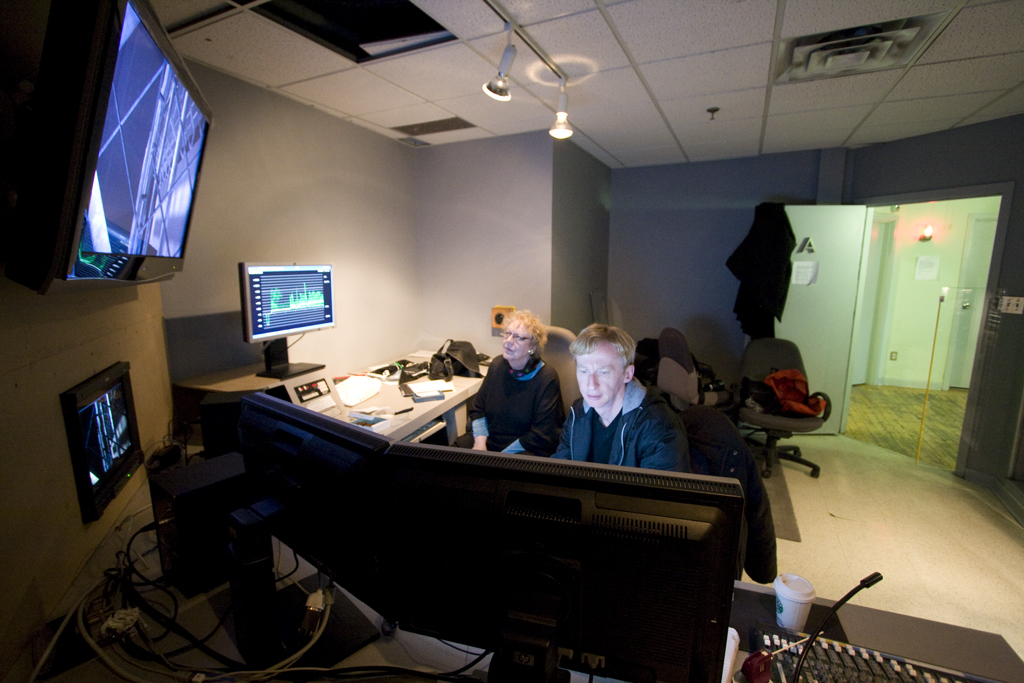
Vera Frenkel and Dennis Day at Charles Street Video, 65 Bellwoods Avenue, 2008. Photo by Konrad Skreta
While Charles Street Video eventually moved to Bellwoods Avenue, my strongest memories — in either location — are oddly ones of great calm, solitude and reflection. Whether late at night or in the middle of the afternoon, all of us worked in separate little edit suites, where we would close the door and go about our business. I can’t tell you how many Friday or Saturday nights I sat alone in one of those suites, sitting in a cockpit and staring into an electronic galaxy (often a bank of three or four monitors). On many occasions I likened myself to Captain Kirk sitting on the deck of the Starship Enterprise. I also came to the conclusion that this must be way better than sex, because I certainly wasn’t getting very much, and my friends were often out in the bars waiting for me to possibly show up before last call.
Added to this personal devotion, I was also an editor on numerous other artist projects — hundreds in fact. One of the strongest memories here is frantically putting the finishing touches on Marusya Bociurkiw’s Night Visions (1988), before she flew off to the Gay & Lesbian Festival in San Francisco for the world premiere. I think a cab was actually waiting at the front door. It was a hot summer night I believe, and I felt as though we were on the cutting edge of this burgeoning new queer cinema. For an artist, could it ever get better than that? Having a feeling of such urgency, legitimacy and purpose.
Similarly, while working with Kim Tomczak and Lisa Steele, on their dreamlike The Blood Records (1997), we had run into a computer with faulty memory chips. Pressed for a screening the following day, we ended up outputting their nearly hour-long project twenty seconds at a time; one of those instances where I realized that the life of an editor was one of many unexpected sacrifices, especially when it came to meeting deadlines.
What Charles Street Video did back then, and I believe still does today, is to give artists a sense of legitimacy, by giving them state of the art tools. From day one, under the guidance of Michael Brook, Rodney Werden, Shalhevet Goldhar and Nancy Paterson, Charles Street strived to do what all other art forms (theatre, dance, ballet, etc.) have strived to do; set up a world-class institution, where artists of all inclinations could come and work. This was, and still is met with some resistance because video art is seen by many as “not television.” Television is seen as highly produced, and often constructed from a restrictive visual language. Video art is something else. So why does a video art facility need all the gadgets of television? I don’t think any other art form has such an evident and problematic nemesis.
I loved Charles Street Video because I never believed we should define ourselves by what we are not, and I never ever felt that an “effect” had any essential or a priori moral value. ALL of these electronic tools and commercial languages were and are de-constructable.
And now of course the question is, are these technology-based artist centres even necessary nowadays, with HD cell phone video recorders and cheap editing software? After a decade or so of uncertainty, I can now say with complete conviction – YES – for three main reasons.
The first is the technology industry itself. Like an insatiable monster, it has to change in order to keep selling products. Instead of perhaps having to get bigger, it now has to get more resolution. Artists will always be one step behind the latest “resolutions,” and this is where artist-run centres can fill the gap. There was a brief period when we romanced the idea that dramatic movies might all be made from low-tech, accessible devices (remember the excitement over The Blair Witch Project?). And certainly there are lots of documentaries that fit this description. But if you go to any Gay and Lesbian Festival or Art on Film Festival, you’ll see that we’re back to our old ways. Most of the up-and-coming artists and filmmakers want the option to work with the latest HD technologies. Not everyone romances low-tech.
The second reason is the camera lens. Tiny portable camera devices do not have great fixed or inter-changeable lenses. The whole “craft” of filmmaking is burgeoning once again – after a little hiatus – meaning students and artists want to work with depth of field, props, costumes – the whole nine yards. The minute you put a decent lens on something, you at least triple its cost, once again pushing it out of the budget of many aspiring individuals. Go to an outdoor event that’s being recorded. While you’ll see lots of cellphone cameras and DSLR’s, you’ll also going to see big cameras on tripods. Artists can’t afford these, artist-run centres can.
The final reason we need artist-run centres, perhaps more than ever, is for networking; good old-fashioned flesh and bones networking. Pixels only provide so much delight, and the anonymous void of connecting through Craigslist, or looking at work on YouTube, is so detached, unless you follow up with a phone number and a “hook up.” I can say from experience that technology is very seductive (dangerously so), and like a trip to the cottage, we have to get out of the house, hang out with like-minded individuals and get away from our computer screens.


